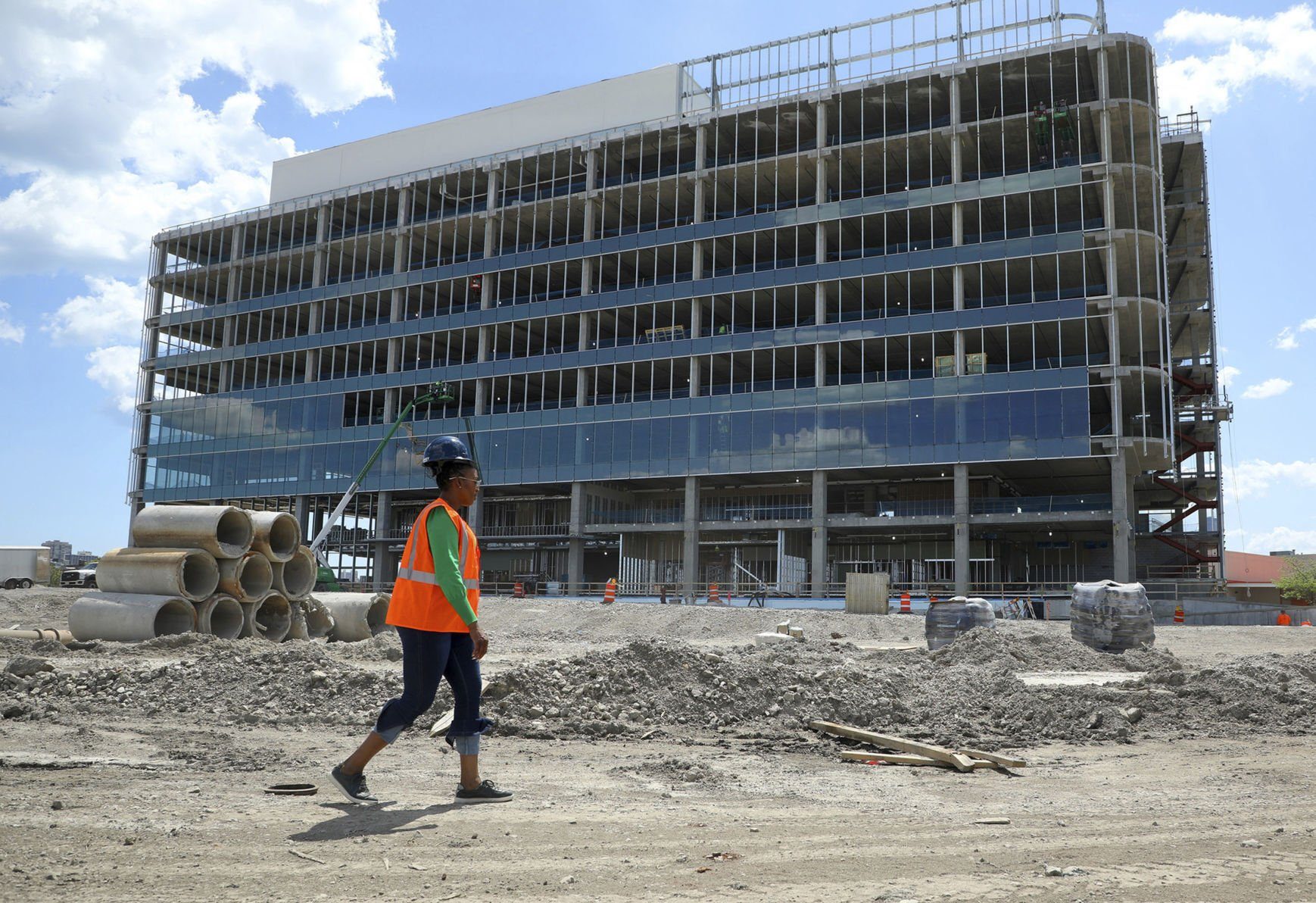Much of Chicago’s office market remains stuck in the doldrums, but another economic engine has come to life, ready to remake the city into a hub for advanced industry and
research.
New towers dedicated to life sciences and biotech already are rising in an arc around the downtown core, with more likely on the way.
“It really is the next industry for Chicago,” said Regina Stilp, principal of Farpoint Development, part of a team chosen by the city to transform the former Michael Reese Hospital site on the Bronzeville lakefront into a $7 billion mixed-use development.
Farpoint’s team soon will break ground on the Bronzeville Innovation Center, a 500,000-square-foot building with labs and offices, where life sciences entrepreneurs will create startup firms with help from Israel’s Sheba Medical Center.
Stilp said it and other new developments means Chicago might finally compete with mammoth life sciences clusters in Boston, San Francisco and San Diego, giving the thousands of scientists and lab workers graduating each year from local universities ways to stay in their hometown and grow its economy.
“They want to stay here, but there’s this brain drain to the coasts because there are no life science jobs or tech jobs that they really want,” Stilp said. “So, we’re trying to solve that.”
Farpoint and its partners aren’t alone. A who’s who of the local development community are either launching or already leasing several million square feet of new space dedicated to life sciences, forming the cornerstones of planned communities such as Sterling Bay’s Lincoln Yards, Related Midwest’s The 78 and the former Reese site, as well as in the rapidly expanding Fulton Market neighborhood.
Experts say developers finished or started about several million square feet already, with another 2 million square feet of buildings on the drawing board.
“All of these developers are playing the life sciences game, so obviously they believe it’s crucial to Chicago’s continued growth,” said Jonathan Metzl, executive vice president of commercial real estate firm Cushman & Wakefield.
Some builders pivoted from office development to the life sciences sector, and the shift comes at the right time. COVID-19 kept thousands of Chicago workers confined to their homes but also led to explosive nationwide demand for research into new therapies for disease. And unlike new corporate headquarters, which typically bring in highly educated workforces, life sciences firms need people with a range of experiences, from scientists with advanced degrees to lab workers and support staff who did not graduate from college.
It’s a recipe for broad-based economic development, fueling both the construction of splendid lab buildings and high-priced apartment towers for top earners, as well as providing jobs for disadvantaged communities near the new life sciences clusters.
“What many people don’t realize is that 40% of life sciences jobs only require a high school diploma or a GED,” said Dr. Suzet McKinney, who leads developer Sterling Bay’s life sciences division and formerly led the Illinois Medical District on Chicago’s West Side.
“One of the advantages for Illinois and Chicago is (laboratories need) people with Ph.D.s and master’s degrees, and also a significant number of people with associate degrees who work in labs, and these are all high-paying jobs,” said Jim Sullivan, chief executive officer of Vanqua Bio, a new Chicago-based life sciences firm developing a therapy that will slow or stop the progression of a form of Parkinson’s disease.
Richard Florida, an urban planning expert at the University of Toronto, said shifting life sciences into high gear makes sense for cities suffering from COVID-19. Laboratories require hands-on work, so researchers are more likely to sign leases for new space and expand while traditional office users stay home on Zoom calls and eventually vacate offices they no longer need.
“Real estate leaders have always been able to remake downtowns in a new way, and I think they’re doing it again,” he said.


